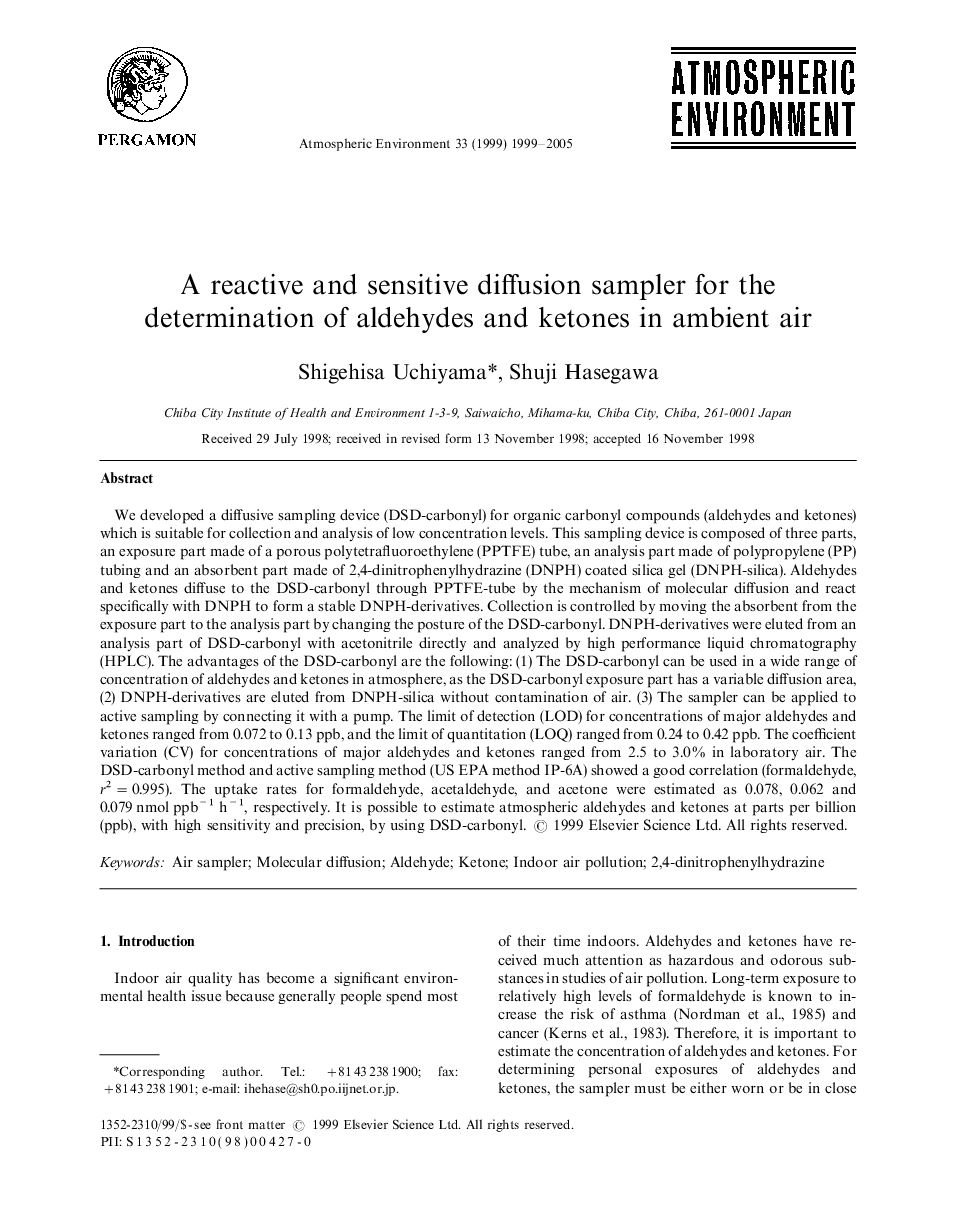| کد مقاله | کد نشریه | سال انتشار | مقاله انگلیسی | نسخه تمام متن |
|---|---|---|---|---|
| 4447472 | 1311445 | 2005 | 7 صفحه PDF | دانلود رایگان |

We developed a diffusive sampling device (DSD-carbonyl) for organic carbonyl compounds (aldehydes and ketones) which is suitable for collection and analysis of low concentration levels. This sampling device is composed of three parts, an exposure part made of a porous polytetrafluoroethylene (PPTFE) tube, an analysis part made of polypropylene (PP) tubing and an absorbent part made of 2,4-dinitrophenylhydrazine (DNPH) coated silica gel (DNPH-silica). Aldehydes and ketones diffuse to the DSD-carbonyl through PPTFE-tube by the mechanism of molecular diffusion and react specifically with DNPH to form a stable DNPH-derivatives. Collection is controlled by moving the absorbent from the exposure part to the analysis part by changing the posture of the DSD-carbonyl. DNPH-derivatives were eluted from an analysis part of DSD-carbonyl with acetonitrile directly and analyzed by high performance liquid chromatography (HPLC). The advantages of the DSD-carbonyl are the following: (1) The DSD-carbonyl can be used in a wide range of concentration of aldehydes and ketones in atmosphere, as the DSD-carbonyl exposure part has a variable diffusion area, (2) DNPH-derivatives are eluted from DNPH-silica without contamination of air. (3) The sampler can be applied to active sampling by connecting it with a pump. The limit of detection (LOD) for concentrations of major aldehydes and ketones ranged from 0.072 to 0.13 ppb, and the limit of quantitation (LOQ) ranged from 0.24 to 0.42 ppb. The coefficient variation (CV) for concentrations of major aldehydes and ketones ranged from 2.5 to 3.0% in laboratory air. The DSD-carbonyl method and active sampling method (US EPA method IP-6A) showed a good correlation (formaldehyde, r2=0.995). The uptake rates for formaldehyde, acetaldehyde, and acetone were estimated as 0.078, 0.062 and 0.079 nmol ppb-1 h-1, respectively. It is possible to estimate atmospheric aldehydes and ketones at parts per billion (ppb), with high sensitivity and precision, by using DSD-carbonyl.
Journal: Atmospheric Environment - Volume 33, Issue 13, 1 June 1999, Pages 1999-2005